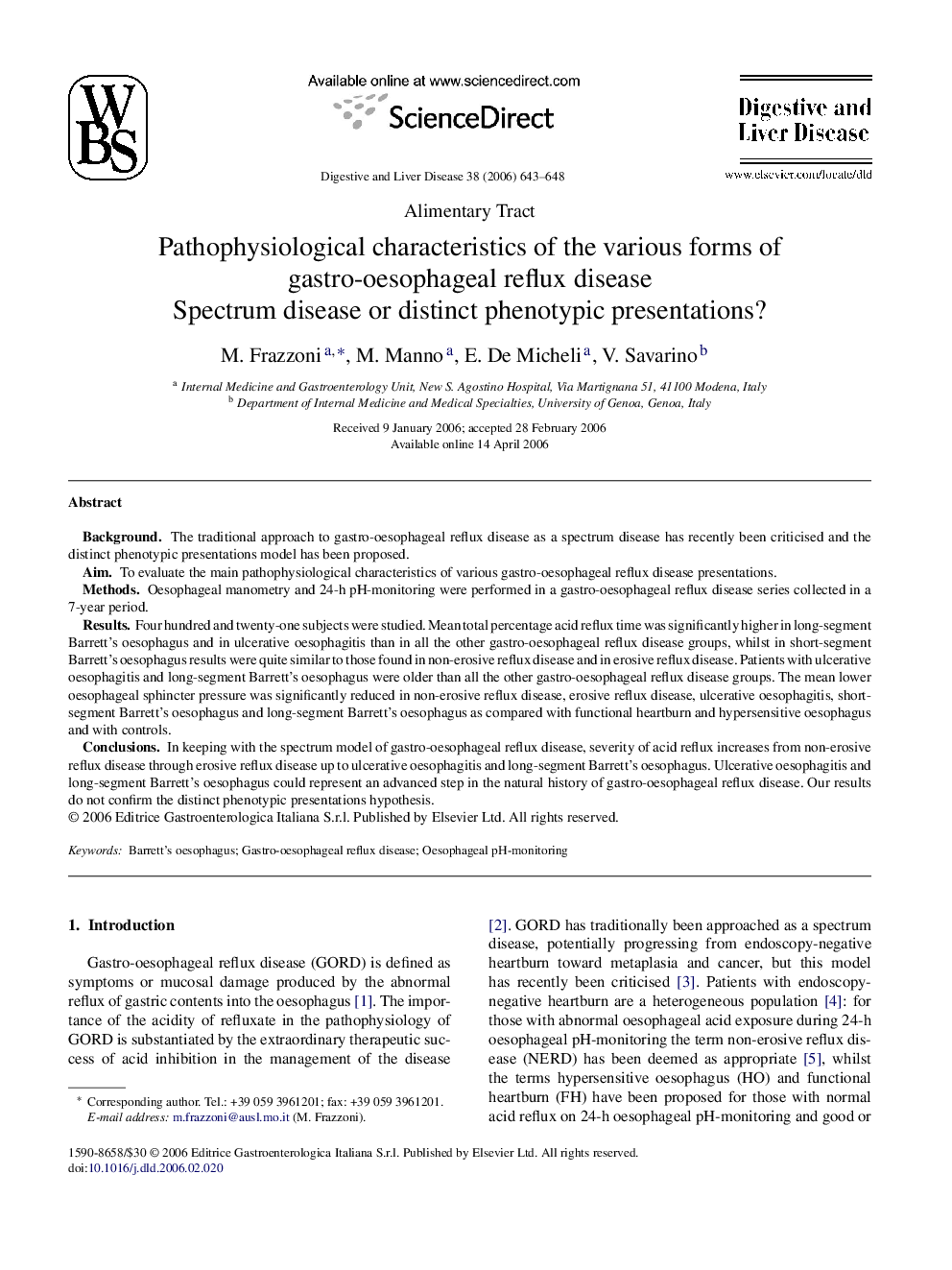| Article ID | Journal | Published Year | Pages | File Type |
|---|---|---|---|---|
| 3265125 | Digestive and Liver Disease | 2006 | 6 Pages |
BackgroundThe traditional approach to gastro-oesophageal reflux disease as a spectrum disease has recently been criticised and the distinct phenotypic presentations model has been proposed.AimTo evaluate the main pathophysiological characteristics of various gastro-oesophageal reflux disease presentations.MethodsOesophageal manometry and 24-h pH-monitoring were performed in a gastro-oesophageal reflux disease series collected in a 7-year period.ResultsFour hundred and twenty-one subjects were studied. Mean total percentage acid reflux time was significantly higher in long-segment Barrett's oesophagus and in ulcerative oesophagitis than in all the other gastro-oesophageal reflux disease groups, whilst in short-segment Barrett's oesophagus results were quite similar to those found in non-erosive reflux disease and in erosive reflux disease. Patients with ulcerative oesophagitis and long-segment Barrett's oesophagus were older than all the other gastro-oesophageal reflux disease groups. The mean lower oesophageal sphincter pressure was significantly reduced in non-erosive reflux disease, erosive reflux disease, ulcerative oesophagitis, short-segment Barrett's oesophagus and long-segment Barrett's oesophagus as compared with functional heartburn and hypersensitive oesophagus and with controls.ConclusionsIn keeping with the spectrum model of gastro-oesophageal reflux disease, severity of acid reflux increases from non-erosive reflux disease through erosive reflux disease up to ulcerative oesophagitis and long-segment Barrett's oesophagus. Ulcerative oesophagitis and long-segment Barrett's oesophagus could represent an advanced step in the natural history of gastro-oesophageal reflux disease. Our results do not confirm the distinct phenotypic presentations hypothesis.
